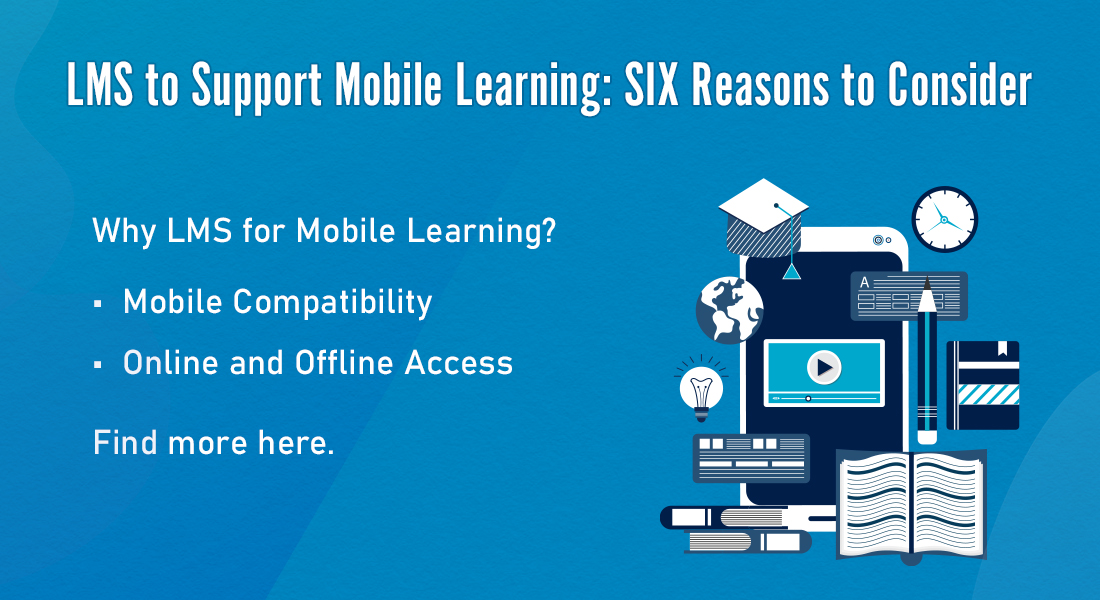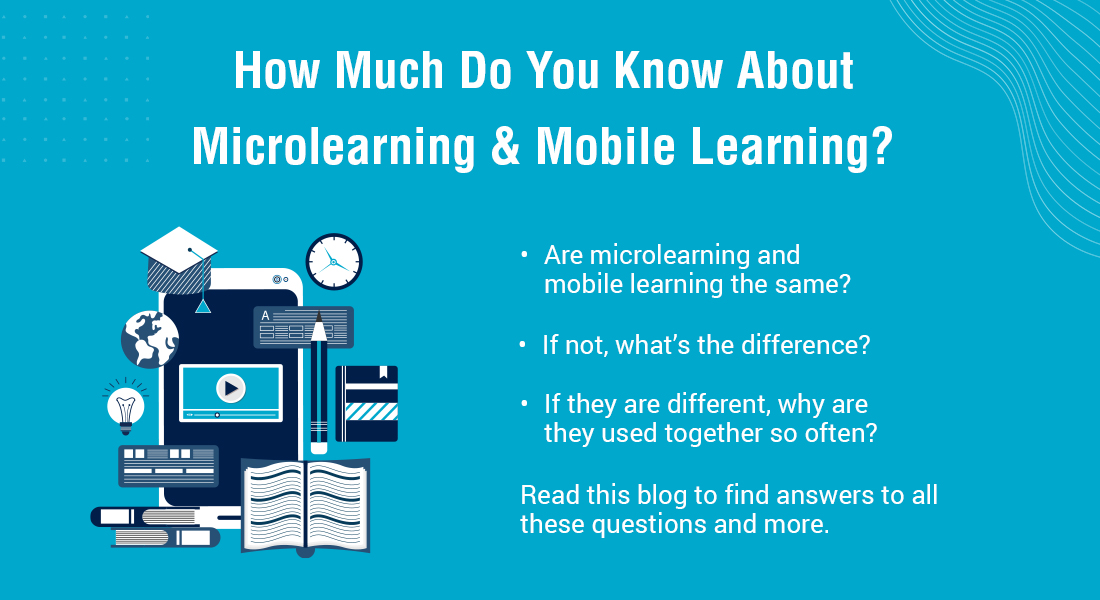TRENDING in 2021: What Mobile Learning Holds in Store

Ah! Mobile Learning. Those who have not heard of it or do not know what it means probably spent 2020 sleeping. Mobile learning ruled corporate training during the COVID-19 crisis in 2020. From attending Zoom/Skype/MS Teams calls to finishing training modules on mobile learning platforms, employees around the globe have more than done justice to mobile learning.
Top 5 Mobile Learning Trends for 2021
- Mobile learning will use more of AR in training.
- Location tracking in mobiles will make geo-customized learning possible.
- ‘Mobile + Micro’ learning will reach new heights.
- Gamified and game-based learning will get a major push with mobile learning.
- Mobile learning will take over refresher training and performance support.
Now with 2021 bringing fresh waves of hope and positivity, it’s time to relook at the benefits of mobile learning for corporate and see what could be trending in mobile learning this year. So without further ado, let’s jump right in.
Check out this webinar on how mobile learning supports different training. Click to download.
Top 5 Mobile Learning Trends for 2021
Here are five mobile learning trends that might be at the top of the charts in 2021.
1. Augmented Reality Will Run the Mobile Learning Game
Here is a fun trivia for you. How do you launch a major product from a major global brand amidst a global lockdown? The answer is augmented reality. On the 21st of July 2020, the global smartphone brand OnePlus launched its latest device, OnePlus Nord, via an augmented reality event that was broadcast on a popular YouTube channel.
In recent years, augmented reality (AR) has climbed to the top ranks of camera technology. E-learning for corporate training has already reserved a special place for AR and VR technologies. In case you are not aware of how AR works, it uses the device’s camera (mainly your smartphone camera) to identify a specific object in its field of vision, and superimpose certain images, text, and graphics on the display, making it appear as if something is interacting with the target object. Most Instagram or Snapchat filters that “augment” or make your face look weird are using AR technology.
But why will AR be a major mobile learning trend in 2021? Imagine a situation where you need to provide urgent training on a newly launched product. In such a case, AR for training can come in real handy. Learners can simply point their phone cameras towards that product and all relevant information will simply pop up on the screen beside the product, providing specific information like what to do and/or what to avoid. For sales representatives, this can be an excellent refresher or training support, given they do not usually carry their computers around with them.
The same can be used for customer training too, with AR making immediate training in times of need much more feasible.
2. Location Tracking in Mobiles will Enable More Personalized Learning
Unbeknownst to you, your smartphone is gathering a ton of data on you and your preferences. While this may seem concerning at times, it can greatly benefit corporate L&D when it comes to providing training that is personalized and specifically catered to learners’ requirements.
If your learners are geographically dispersed across continents, you cannot provide a single ‘one-size-fits-all’ training to all of them. Cultural influences on course design will propel the need for translation and localization of courses, letting you create courses that are specialized and customized to fit the training need as well as geographical and cultural contexts of the target learners.
That is where mobile learning comes in. With advanced location tracking hardware and optimized GPS software, the device can track and pinpoint the learners’ location. This location data can be used to provide personalized learning content to them based on their geography. Now isn’t that so 2021?
3. ‘Mobile + Micro’ Learning Will Reach New Heights
It’s not as if microlearning for corporate training is already not in a respectable place. Spoiler alert – it is! But with mobile learning, the possibilities for microlearning increase exponentially. But how exactly?
Microlearning is used to provide small bites of information to learners, instead of a long module. Each bite is focused on a single performance-based learning objective, with information that is relevant, crisp, and to-the-point. That way the learner is not overwhelmed by huge amounts of information dealing with multiple objectives. This also increases learner motivation and engagement. And mobile learning can be the perfect launching pad for microlearning.
A handheld smart device that is capable of advanced computing can do wonders when paired with a robust learning management system (LMS). Modern-day LMSs come equipped with Artificial Intelligence and Deep Learning capabilities. Given that microlearning modules address a single learning objective, there will be a lot of them, making course selection and assignment a pain. Thanks to AI and deep learning, modern-day LMSs can study the learners’ prior engagements, and based on the preferences, create predictive, customized learning paths, guiding the learners through an endless mass of redundant microlearning modules.
Another key benefit of microlearning with mobile devices is its ability to fully leverage social learning opportunities. When learners need to collaboratively work on something or have a quick discussion on a specific topic, the mobile device ensures easy communication among them. Besides, online social learning platforms like WebEx can be used to host and hold discussions, thereby facilitating the participation of all learners in social learning.
4. Mobile Learning Will Take Game-Based Learning to Its Limits
And no, your learners will not be playing Battle Royale (unless it’s backed by a performance-driven learning objective). Instead, they will be engaging with gamified and game-based learning – highly interactive games, activities, and gamification elements that will help them achieve their objective in an interesting manner.
For your learners, mobile games offer a perfect opportunity to combine work with play without making it seem like either. In a single mobile learning module, you can have engaging mini-games like trivia or hit a target (where the target is the answer), activities like mini-surveys and quizzes, or even vibrant MCQs with a character encouraging the learner; the list goes on. In short, these would be the perfect edutainment pieces for your learners. Alternately, you can add gamification in online training like power-ups, rewards and skill points, levels, leaderboards, and rankings, for a truly ‘in-game competition’ feeling.
Having such activities in your learning module makes sense when you have a touch compatible device to access them on. No more pointing and hovering cursors and clicking mice. Touchscreens on phones and tablets make clicking on options and playing those games much easier.
5. Mobile Learning Will Totally Take Over Performance Support
As much as a mobile device is useful for training on-the-go with short and snappy modules, it cannot replace full-fledged eLearning or rapid eLearning courses for corporate training. What it can be, however, is healthy performance support or learning support tool, as well as a strong platform for just-in-time training and microlearning modules.
E-learning for corporate training occupies its own throne which mobile learning cannot take. But when it comes to informal training or reinforcing learning, there can be no better alternative than something the learners can access whenever and wherever they like/need, and complete in a matter of minutes.
That’s All Folks!
So that was about what will be trending in mobile learning in 2021. Of course, that’s not all that mobile learning is capable of, nor is this list in any way concrete. Who knows, maybe with the perfection of holographic projection technology, corporate training will not even require face-to-face meetings anymore. But that castle is way up in the air and we have to work with what we have.
Which one do you think will be worth looking forward to? Is there something I missed, something that you think will revolutionize mobile learning in 2021? Or will it be something other than mobile learning that would be ruling 2021?
Stay tuned if you would like to see other microlearning trends of 2021. Until then, read this eBook to know what will trend in eLearning this year.





